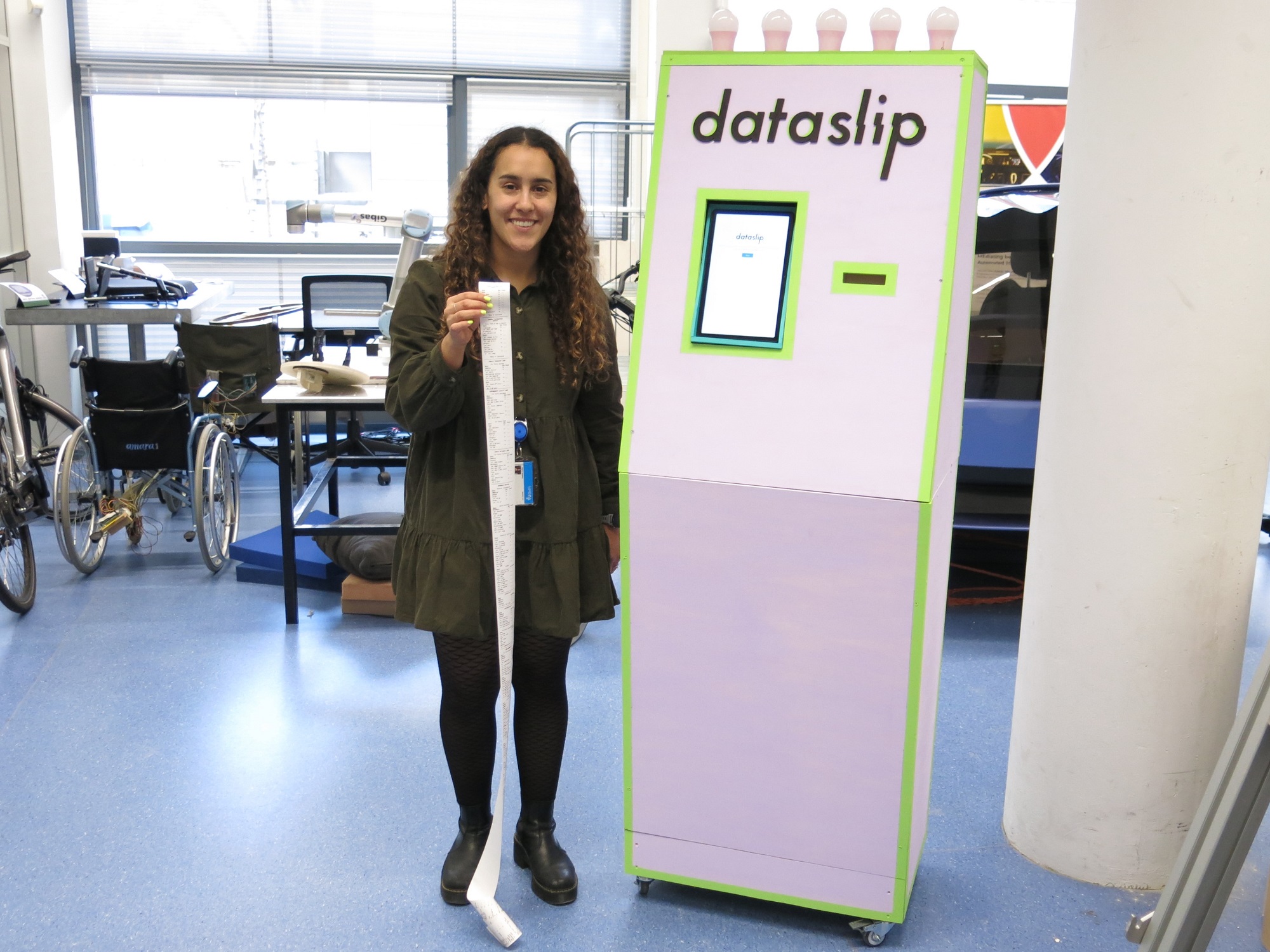What is your data worth to you? PhD candidate Alejandra Gómez Ortega wants people to think about this in a more concrete way.
Alejandra Gómez Ortega: “Data being collected is actually very personal, even intimate.” (Photo: Heather Montague)
English only
“I moved here almost three years ago to do my PhD on the topic of data donation. What I’m trying to do is find ways for people to donate or share their personal data for research while ensuring that this process is balanced. That means making sure people actually know what information they are giving away and hopefully they gain something in return as part of the process.
My background is in electronics engineering and I have always liked prototyping, working with tools and building things. I think that is why I approached this project in the first place. But it’s also because I was previously working in responsible robotics and I was very interested in the topic of responsibility and how we can make responsible things. Now, I think that’s the lens through which I try to approach data donation: how we can make it fair, balanced and responsible.
Something that I realised in my research is that when it comes to personal data it’s often such an abstract entity that we don’t really know what it is or what it looks like. We know there is information about us that is being collected by many different products and services, but we don’t really know exactly what that looks like. As part of my research, I was working on a project with voice assistants, the Google Assistant. I was asking Google Assistant users to donate their data. Together, we went through a process of discovering what this data actually was, what it contains, and what can be inferred from it. During this process, everyone went through a journey that started by saying this is nothing, it’s just me saying ‘ok Google, turn on the light’. But then everyone’s opinion shifted as they realised that the data being collected was actually very personal, even intimate. It feels very different when you look at data from a different angle and experience how it looks and feels.
‘The idea is to let people interact with the box and to see what their reactions are’
With the Dataslip box, I wanted to try and bring some materiality to this abstract concept of data and to hopefully raise awareness about the fact that it’s there. This installation can actually show you what the information you’re giving away looks like. It was inspired by the ATM concept. We wanted to have a very simple interaction where people answer a few questions about the apps that they use and then they get a printed receipt showing the personal data that is being collected about them. This can be from things we use every day like public train passes, grocery store customer cards or smart wearable devices. The idea is to let people interact with the box and to see what their reactions are. I’m curious to see how people feel when they can see what their personal data looks like.
We recently did a demonstration and starting in January the installation will be available to interact with at the Faculty of Industrial Design Engineering. After that, the idea is to move the box around campus to different faculties. I really want to help people understand a bit more about their personal data. I hope that by being more aware of the fact that your data is there, maybe some people will be motivated to donate or share their data for research.
It has been an interesting journey because I started my PhD and moved to the Netherlands during the pandemic. Now I’m really happy to be on campus and I think the Dataslip box is a nice excuse to interact with people who are also here.”
Want to be featured in Humans of TU Delft? Or do you know someone with a good story to tell? Send us an e-mail at humansoftudelft@gmail.com
Heather Montague / Freelance writer



Comments are closed.